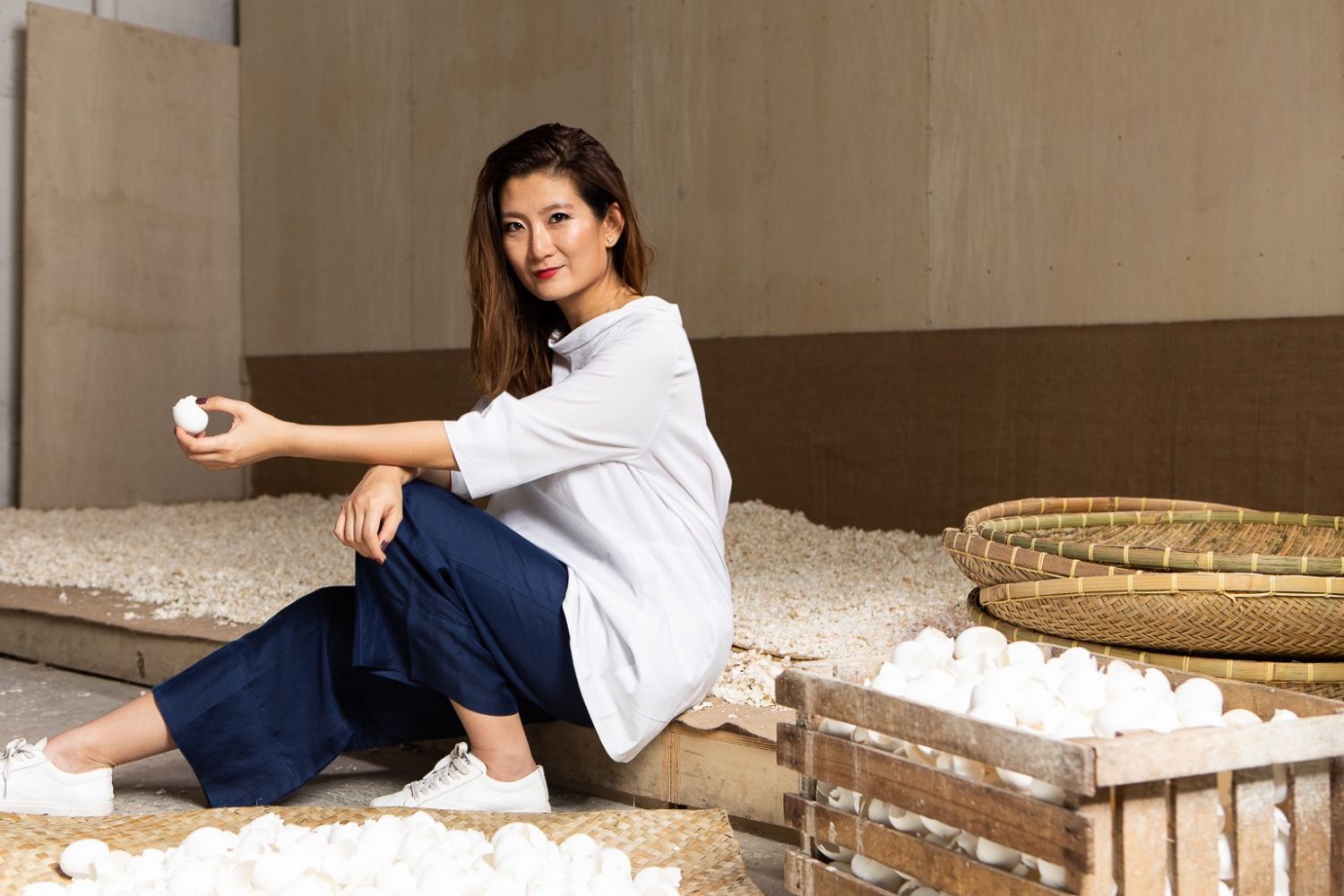The founder of The Fabrick Lab and chief material innovator of Nature Squared realised the importance of sustainability early on, and it has informed her innovative design ever since. She opens up about her career journey
Elaine Yan Ling Ng’s design is both functional and beautiful. But it also has a greater purpose. Take the British-Chinese materials designer’s most recent work for Nature Squared, a company that seeks to transform sustainable natural materials into products for luxury interiors. As the brand’s chief material innovator since 2020, Ng’s first project for the brand was CArrelé, eco-friendly high-performance tiles made from upcycled eggshells that are baked or naturally dyed in a range of colours. They make use of some of the 250,000 tonnes of eggshell waste that end up in landfill annually.
This is regenerative design, which goes further than sustainable design. The latter aims to be carbon neutral, while the former has a net positive impact. “If we look at how we are exhausting our planet year on year, regenerative design should be the direction we go in,” says Ng. “Sustainable design is only putting a plaster on the problem.”
Eggshell is just the beginning. Ng has plans to look at other natural materials such as fish skin and seashells. The latter is another sustainably sourced biowaste that is traditionally used in furniture and interiors, particularly as inlay, the offcuts of which Ng plans to focus on. “It’s interesting when a product is being filtered from the sea to various industries, and then we are at the bottom of the supply chain, so what do we do with it?” questions Ng of her next challenge.

Alongside her role with Nature Squared, Ng runs The Fabrick Lab, an art and design studio and material consultancy that she founded in 2013.
“The Fabrick Lab is technology-driven with handcrafted textiles, while Nature Squared is focused on natural material supply chain and recyclability. The two are quite complementary. With The Fabrick Lab, we prototype and investigate materials, and a lot of what we do is textiles,” says the designer, who trained as a weaver. Ng also works in large-scale installation, incorporating electronics and technology as well as biomimicry into her work. Take her project commissioned by UBS, an interactive sculpture inspired by nature and technology and powered by big data. The concept was based on the way trees share data through mycelium systems and the resulting sculpture was inlaid with handwoven jacquard, reflecting the relationship between computer and craft, and programmed to light up according to air quality data collected from selected locations and analysed by UBS, and in response to viewer interaction.
Textiles have always been important for Ng—a visit to her studio in Hong Kong will reveal a proliferation of looms—and textiles were the foundation of an early project that was pivotal for her, inspiring an initial interest in sustainability. Ng’s Un/Fold project, which she began in 2013, sought to innovate the traditional weaving of Chinese ethnic minorities, specifically in Guizhou, for an urban consumer.





